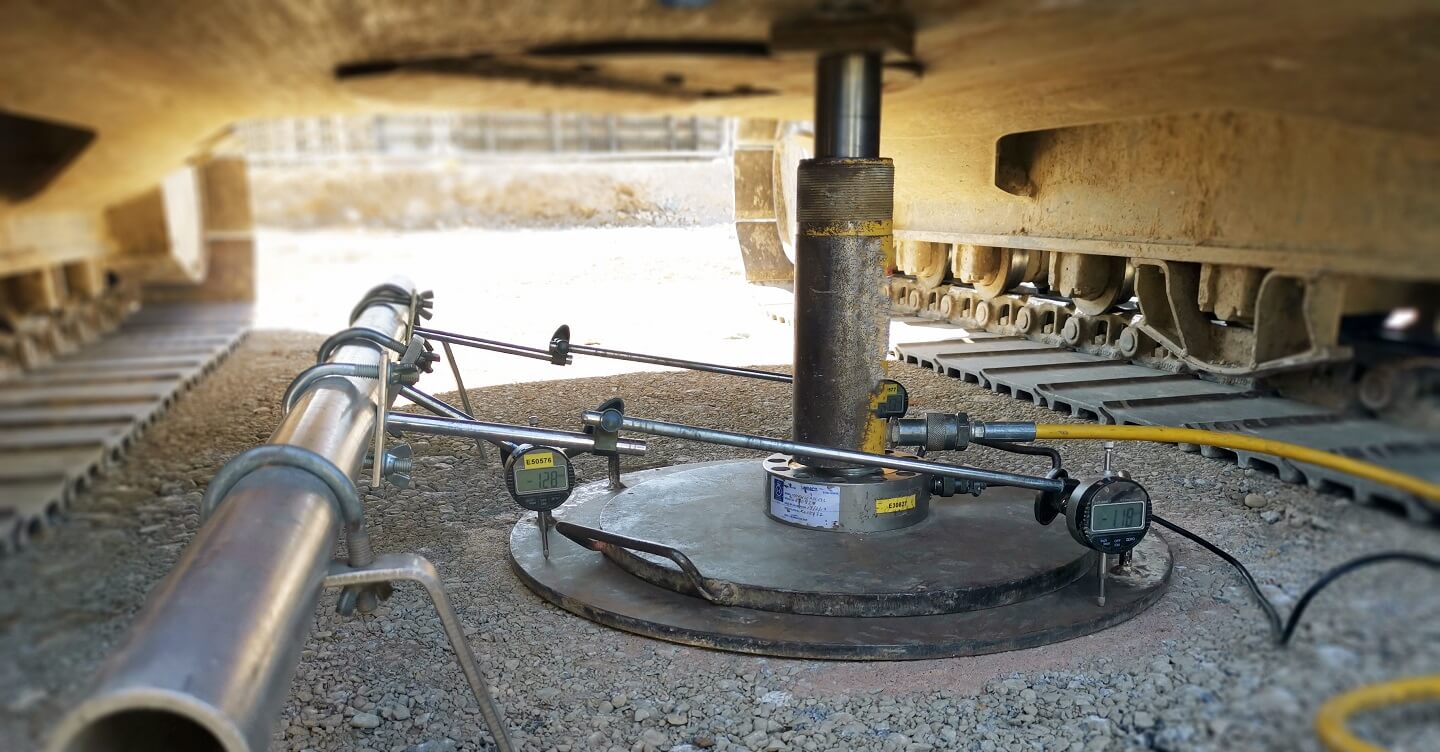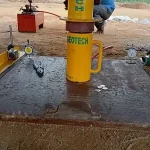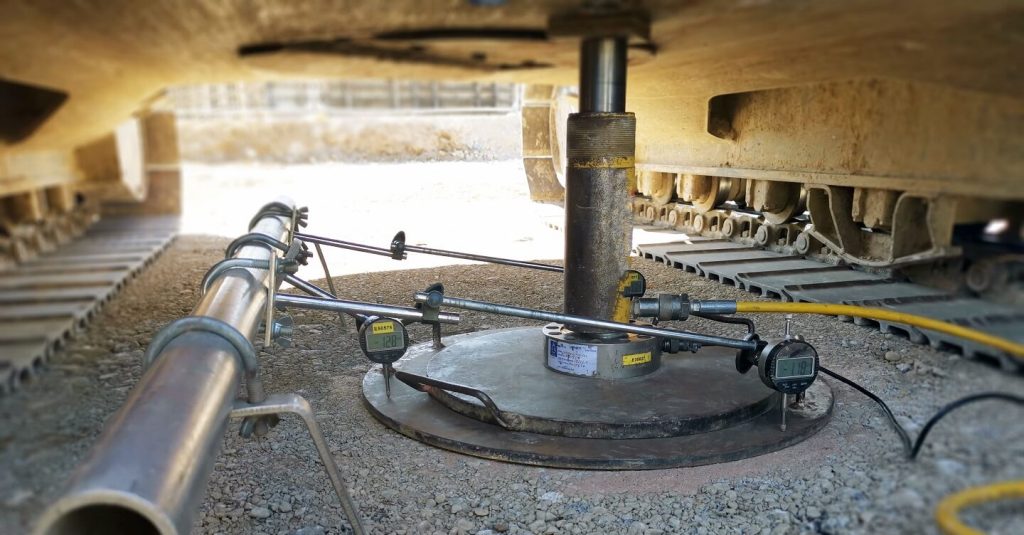CBR Testing: The Gold Standard for Pavement Design and Road Construction

In civil engineering and road construction, few tests are as widely used as CBR testing. The California Bearing Ratio (CBR) test has become the benchmark for pavement design, giving engineers the data they need to know roads, highways, and foundations can withstand the loads they’re designed to carry. Understanding this fundamental procedure is essential for any construction professional working with subgrade materials and pavement structures.
History of CBR Testing
CBR testing was developed by the California State Highway Department in the 1930s as a way to test soil strength for road construction projects. The California bearing ratio CBR test was born out of the need for a standardised procedure to assess how different soils would perform under traffic and construction equipment loads. The test measures the penetration resistance of soil compared to standard crushed rock material, a reliable benchmark for pavement design.
Today, the California bearing ratio test is specified in BS1377 Part 9 1990 Soils for Civil Engineering Purposes, so all testing is done the same way. This standard is part of the BS1377 Part 9 1990 framework for soils for civil engineering, so CBR testing is an internationally recognised method for testing soil strength and bearing capacity.
How CBR Testing Works
The CBR test is a penetration test that measures the force required to penetrate soil with a cylindrical plunger of standard dimensions. During the test, engineers calculate the CBR value by comparing the measured pressure required for penetration against the pressure required for equal penetration of high-quality sub-base material, standard crushed rock.
The test setup involves placing a cylindrical plunger of a specific diameter onto the prepared soil sample or in situ surface. The load is applied gradually while measuring the penetration depth, usually in increments, to give comprehensive data about the soil’s resistance characteristics. The results are then compared to the standard crushed rock material values to show the California bearing ratio.
CBR testing can be done in laboratory conditions using prepared samples and in situ at the actual construction site. In situ testing gives direct information about ground conditions, moisture content and particle size distribution as they exist naturally, while laboratory tests allow for controlled conditions and standardised sample preparation.
What’s Behind CBR Values?
The CBR value is the ratio of the force per unit area required to penetrate a soil mass with a standard plunger to the force per unit area required for equal penetration of standard crushed rock material. This bearing ratio CBR test gives a percentage value that relates directly to soil strength and suitability for civil engineering purposes.
Understanding what CBR values mean in practice is key to proper pavement design. Generally, higher CBR values mean stronger, more stable materials. Clay soils typically show CBR values around 10% or less, which means relatively weak material that may need to be stabilised or replaced for road construction. Sandy soils usually fall in the 10-30% range, while well-graded gravel and high-quality sub-base materials can achieve CBR values of 80-100%.
The relationship between measured pressure and penetration depth gives a characteristic curve that engineers use to determine the CBR value for design purposes. The harder the surface, the higher the CBR value, so this test is a good indicator of a material’s load-bearing capacity.
Laboratory vs In Situ CBR Testing Methods
CBR testing can be done in different ways depending on the project requirements and site conditions. Laboratory CBR tests use carefully prepared samples with controlled moisture content and density, giving standardised results that are essential for material specification and quality control. These tests require soil samples to be compacted to specified density levels and tested under controlled temperature and moisture conditions.
In situ CBR testing, on the other hand, evaluates soil in its natural state at the actual construction site. This method gives direct information about existing ground conditions, natural moisture content, density and structural integrity. In situ tests are particularly useful for assessing subgrade conditions and verifying that construction has achieved the required bearing capacity.
Expert technicians may use both methods on the same project to give comprehensive data. Laboratory results help establish material properties and design parameters, while in situ results confirm that construction meets design specifications and that the ground conditions match the assumptions used in pavement design.
Applications in Road and Pavement Construction
CBR testing is central to road and pavement design, giving the fundamental data to determine pavement thickness and layer specifications. Engineers use CBR values to calculate the structural requirements for different pavement types, so roads can withstand expected traffic loads without excessive deformation or failure. The test results directly affect decisions on subgrade preparation, sub-base thickness and the need for soil stabilisation. Low CBR values may mean ground improvement, additional sub-base material or alternative foundation design. High CBR values can allow for more economical pavement design with reduced material requirements.
Pavement design standards specify minimum CBR values for different road classifications and traffic loadings. These requirements ensure that completed pavements will perform throughout their design life with minimal maintenance and construction costs.
Complementary Testing with Plate Load Methods
While CBR testing gives soil strength data, it’s often used in conjunction with other testing methods to give a complete picture of ground conditions. Plate bearing test procedures complement CBR testing by measuring actual bearing capacity and settlement characteristics under applied loads.
The plate load test uses a different approach, applying load through a plate bearing system to measure how soil responds to surface loading. While CBR testing measures penetration resistance, plate load testing measures bearing capacity and deformation characteristics, giving additional data that’s useful for foundation design and temporary works applications.
Many projects benefit from both CBR testing and plate bearing test results, as each method gives unique information about soil behaviour. CBR values determine pavement thickness requirements, while plate load test results confirm bearing capacity for specific loading conditions.
Quality Control and Construction Verification
CBR testing is a critical quality control tool throughout the construction process. Initial tests establish baseline soil conditions and design parameters, while construction phase testing verifies that work meets specification requirements. Regular CBR testing during construction identifies problems early, so corrective action can be taken before they impact project schedules or costs.
Construction teams typically do CBR tests on prepared subgrade surfaces before placing sub-base or pavement layers. These tests confirm that the ground has achieved the required strength characteristics and that moisture conditions are suitable for subsequent construction activities.
Laboratory analysis of samples taken during construction provides additional quality assurance, so materials meet specification requirements and construction methods are producing the intended results. Expert interpretation of test results helps project teams make informed decisions on construction procedures and material acceptance.
Modern Advances in CBR Testing Technology
CBR testing has benefited from advances in testing equipment and data analysis methods. Modern equipment gives more accurate load measurement and penetration monitoring, while digital data collection systems reduce testing time and improve result reliability.
These advances have made CBR testing more efficient while maintaining the accuracy and repeatability that make it such a valuable engineering tool. Automated testing equipment can now give results faster than traditional manual methods, without compromising data quality. Advanced analysis techniques can extract more information from test results to inform more precise pavement design and construction decisions.
The Future of CBR Testing in Civil Engineering
As infrastructure demand grows and sustainability becomes more important, CBR testing will remain essential for pavement design and construction. The test’s ability to give reliable, quantitative data on soil strength makes it vital for optimising material use and long-term pavement performance.
New applications include testing of recycled materials and alternative construction methods, where CBR testing verifies that new approaches meet traditional performance standards. The test’s flexibility and proven track record mean it will continue to be used on civil engineering projects for years to come.
Conclusion: Building on Solid Ground
CBR testing is more than just a construction procedure – it’s the foundation of confident pavement design and road construction. By giving reliable, quantitative data on soil strength and bearing characteristics, CBR testing allows engineers to design efficient, durable pavements that meet performance requirements while minimising material use and construction costs.
Whether for major highway projects or smaller civil engineering applications, CBR testing gives the essential data to ensure roads and pavements are built to last. In an industry where performance and safety are paramount, CBR testing will continue to be the benchmark for soil testing and pavement design, for infrastructure that serves communities for decades to come. Contact cbrtesting.uk today to learn more about the process and how we can help ensure your projects are built on solid ground.
- Wellness Living in Singapore: Redefining Luxury Residences
 Modern luxury in Singapore is evolving beyond aesthetics and location. Today’s discerning homeowners seek residences… Read more: Wellness Living in Singapore: Redefining Luxury Residences
Modern luxury in Singapore is evolving beyond aesthetics and location. Today’s discerning homeowners seek residences… Read more: Wellness Living in Singapore: Redefining Luxury Residences - Scalp & Follicle Rescue: Reviving Growth in Textured Hair After Relaxer Damage
 Chemical relaxers have long been part of many textured-hair routines, offering that sleek, straight look… Read more: Scalp & Follicle Rescue: Reviving Growth in Textured Hair After Relaxer Damage
Chemical relaxers have long been part of many textured-hair routines, offering that sleek, straight look… Read more: Scalp & Follicle Rescue: Reviving Growth in Textured Hair After Relaxer Damage - The Continuum: A New Era of Freehold Brilliance in District 15
 Among Singapore’s modern developments, few manage to strike the perfect balance between contemporary design and… Read more: The Continuum: A New Era of Freehold Brilliance in District 15
Among Singapore’s modern developments, few manage to strike the perfect balance between contemporary design and… Read more: The Continuum: A New Era of Freehold Brilliance in District 15 - Plate Testing: Essential Ground Investigation for Safe Construction Projects
 Plate load testing represents a fundamental site testing method in civil engineering, providing reliable data… Read more: Plate Testing: Essential Ground Investigation for Safe Construction Projects
Plate load testing represents a fundamental site testing method in civil engineering, providing reliable data… Read more: Plate Testing: Essential Ground Investigation for Safe Construction Projects - The VOOPOO ARGUS P3: Where a 2.01″ Touchscreen Meets Mini BOX Design
 A significant leap forward now arrives in the vaping industry. Building upon the iconic industrial… Read more: The VOOPOO ARGUS P3: Where a 2.01″ Touchscreen Meets Mini BOX Design
A significant leap forward now arrives in the vaping industry. Building upon the iconic industrial… Read more: The VOOPOO ARGUS P3: Where a 2.01″ Touchscreen Meets Mini BOX Design

Scalp & Follicle Rescue: Reviving Growth in Textured Hair After Relaxer Damage

Why Custom Lift Kits Are the Key to Better Ground Clearance

CBR Testing: The Gold Standard for Pavement Design and Road Construction

The Impact of UK Weather on Driveway Surfaces

A Tranquil Escape in the City

Therapeutic Foster Care: Specialised Support for Children Who Need It Most

Retail Therapy and Boutique Shopping Near Zyon Grand

